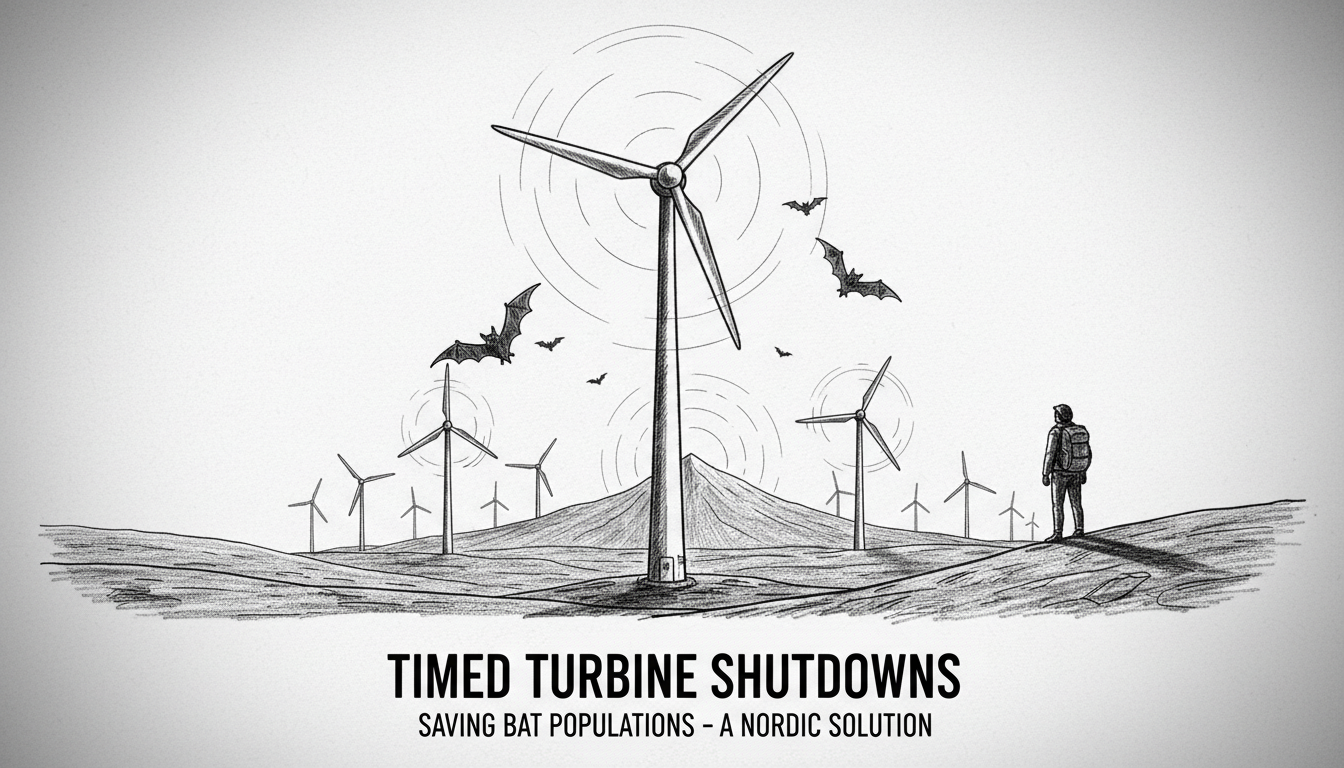A new method called 'bat mode' could dramatically reduce bat fatalities at wind farms in southern Sweden. The approach involves stopping wind turbines during specific conditions when bats face the highest risk of collision.
Wind turbines in forest environments would remain stationary from dusk until dawn between mid-July and mid-September. This applies specifically when winds blow slower than six meters per second. These conditions create the greatest danger for bats flying near turbine blades.
The proposal targets three Swedish counties: Skåne, Blekinge, and Kalmar. The greater mouse-eared bat stands to benefit most from these measures. This species faces particular threats from operating turbines during their active seasons.
Research shows regulated turbine operation reduces bat mortality by 60 percent. This dramatic decrease demonstrates the effectiveness of timed shutdowns during critical periods.
Sweden's wind energy sector continues expanding while balancing environmental concerns. The country aims to increase renewable energy production without harming local wildlife populations. This bat protection initiative represents a practical compromise between green energy goals and biodiversity conservation.
Other Nordic countries face similar challenges with wind power development. Norway and Denmark have implemented various wildlife protection measures near renewable energy installations. The Swedish approach offers a model that could be adapted across the region.
International readers might wonder why bats face such risks around wind turbines. The animals use wind currents for navigation and hunting. They often fail to detect fast-moving turbine blades until it is too late. The problem becomes most severe during migration and breeding seasons.
The timed shutdown approach makes practical sense for energy companies too. Wind speeds below six meters per second typically produce minimal electricity anyway. Stopping turbines during these conditions has little impact on overall power generation.
Local environmental authorities have monitored bat populations near wind farms for several years. Their data revealed concerning mortality rates during specific seasonal conditions. This prompted the development of targeted protection measures.
Sweden's commitment to both renewable energy and wildlife protection reflects broader Nordic environmental values. The region consistently ranks high in global sustainability indexes. This balanced approach to green development demonstrates how countries can pursue climate goals while protecting local ecosystems.
The bat protection measures come as Sweden accelerates its transition away from fossil fuels. Wind power represents a crucial component of the country's energy strategy. Finding ways to minimize environmental impacts ensures public support for continued renewable energy expansion.
Energy companies will need to adjust their operations to implement the new guidelines. Modern turbines can be programmed for automatic shutdown during specified conditions. This reduces the need for manual intervention while ensuring consistent protection for bat populations.
Similar wildlife protection measures have proven successful in other countries. Germany and the United States have implemented various approaches to reduce bird and bat fatalities at wind farms. The Swedish model adds another tool for balancing renewable energy development with environmental stewardship.

